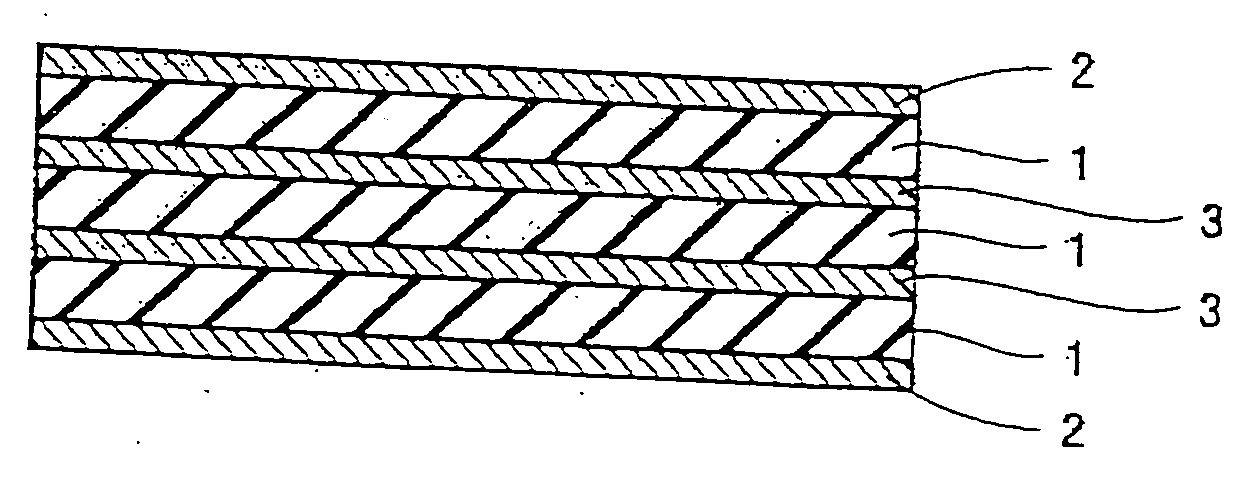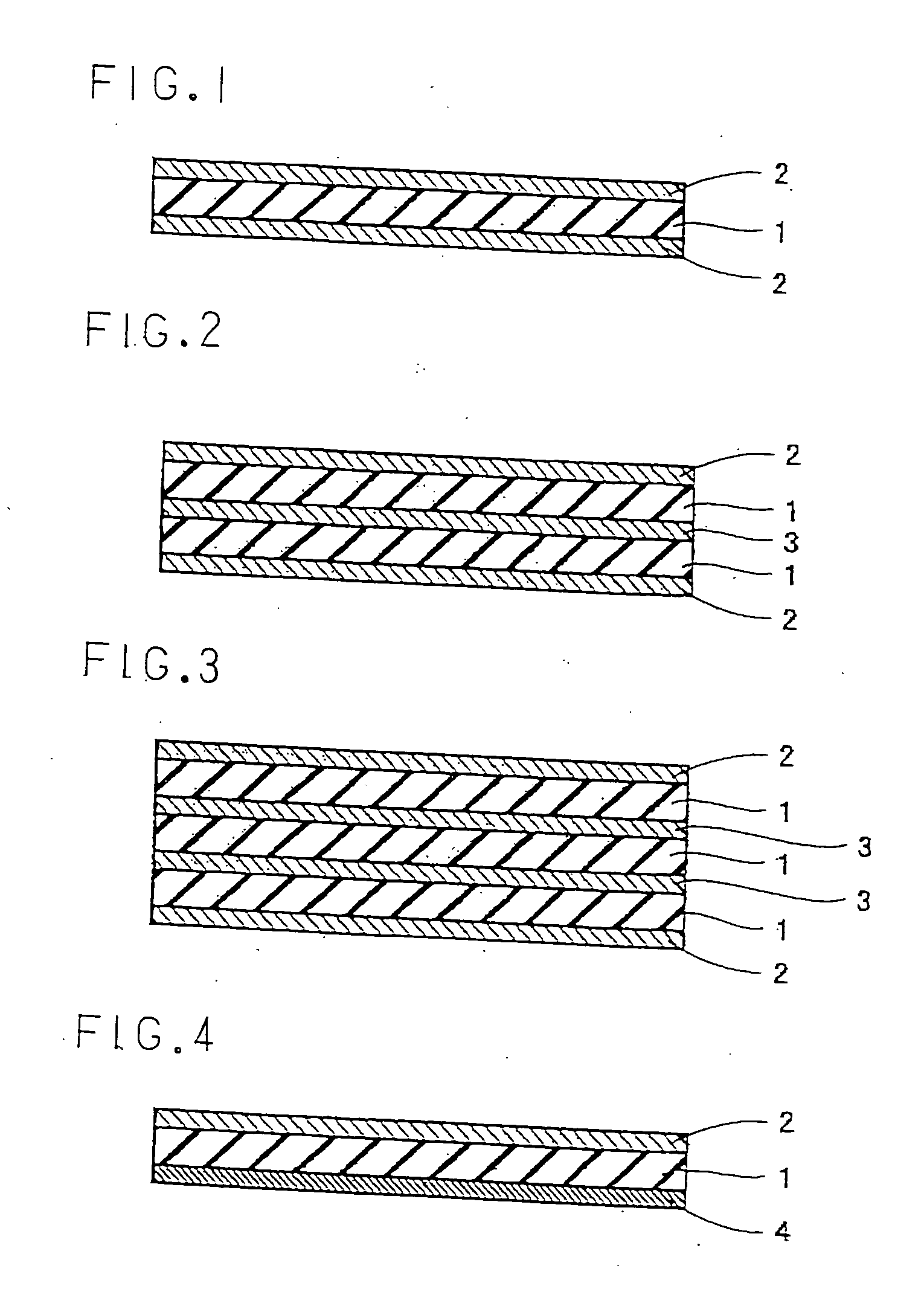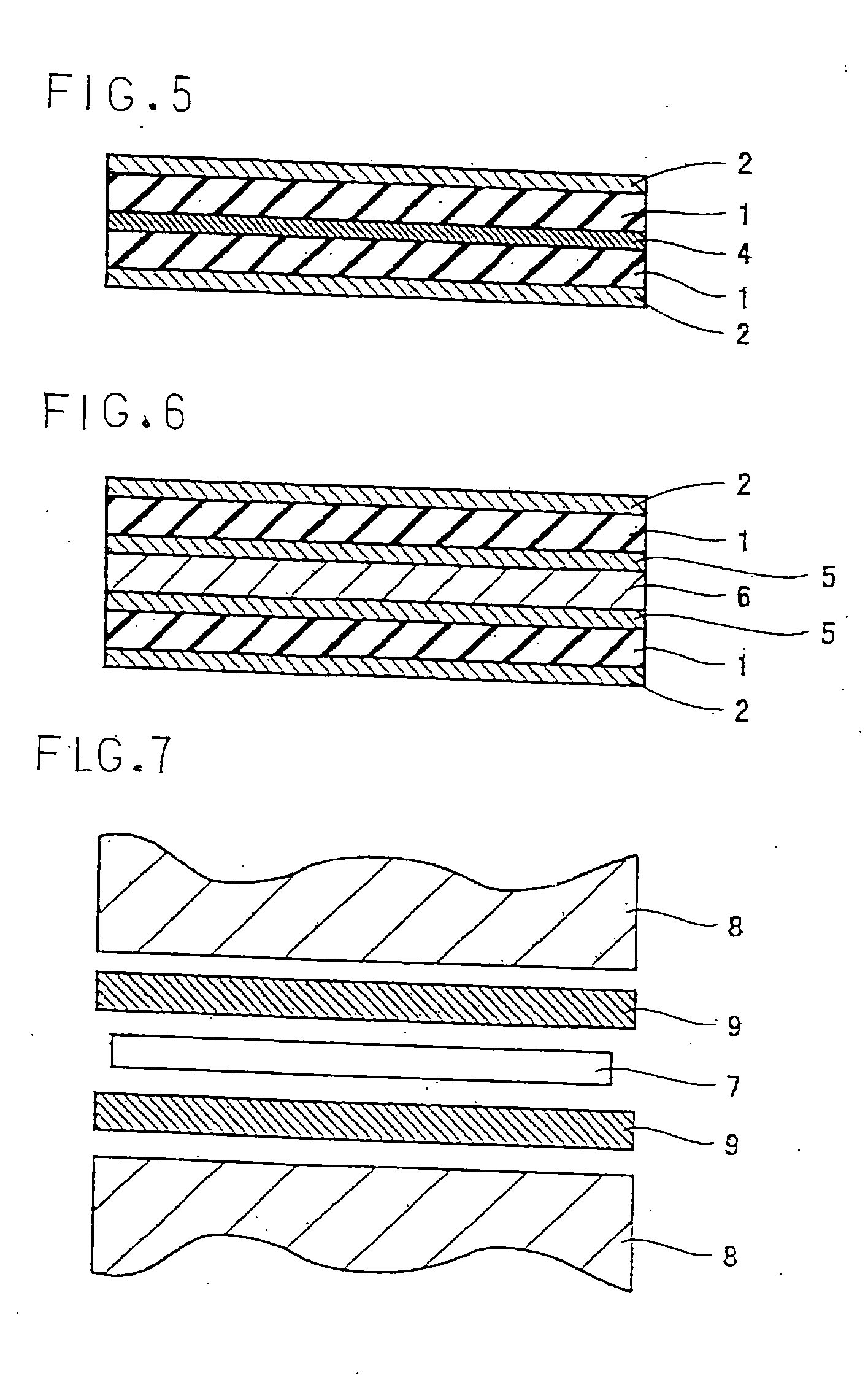Cushioning material for hot pressing and process for producing the same
a technology of cushioning material and hot pressing, which is applied in the field of cushioning material for hot pressing and the process of producing the same, can solve the problems of contaminating the object, bleed out of further low molecular weight compounding agents contained in the rubber, and poor release ability of the rubber, so as to achieve good release ability of the cushioning pad surfa
- Summary
- Abstract
- Description
- Claims
- Application Information
AI Technical Summary
Benefits of technology
Problems solved by technology
Method used
Image
Examples
Embodiment Construction
[0024] Hereinafter, examples of the present invention will be described with reference to the drawings. FIGS. 1 to 6 show typical examples of a cushioning pad for hot pressing according to the present invention.
[0025] The cushioning pad for hot pressing according to this invention has a structure wherein a surface layer material 2 made of a porous heat-resistant resin film is laminated on and integrated with at least one face of a rubber sheet 1.
[0026] As the material of rubber sheet 1, a rubber having heat resistance can be used. Specifically, preferred are fluoro rubber, EPM, EPDM, hydrogenated nitrile rubber, silicone rubber, acrylic rubber, butyl rubber and the like. These rubber materials can be used alone, in the form of a blend thereof, or in the form of a blend thereof with an organic or inorganic material other than the above. Among these, fluoro rubber is preferably used from the standpoint of superior heat resistance. In particular, a polyol vulcanized vinylidene fluori...
PUM
| Property | Measurement | Unit |
|---|---|---|
| pore diameter | aaaaa | aaaaa |
| thickness | aaaaa | aaaaa |
| melting point | aaaaa | aaaaa |
Abstract
Description
Claims
Application Information
 Login to View More
Login to View More - R&D
- Intellectual Property
- Life Sciences
- Materials
- Tech Scout
- Unparalleled Data Quality
- Higher Quality Content
- 60% Fewer Hallucinations
Browse by: Latest US Patents, China's latest patents, Technical Efficacy Thesaurus, Application Domain, Technology Topic, Popular Technical Reports.
© 2025 PatSnap. All rights reserved.Legal|Privacy policy|Modern Slavery Act Transparency Statement|Sitemap|About US| Contact US: help@patsnap.com



